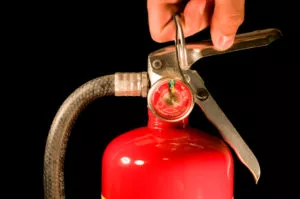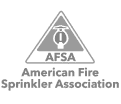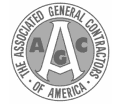Common Fire Extinguisher Sizes and Weights in Houston
Are you shopping for fire extinguishers for your Houston-area business? You may feel overwhelmed by your options, but navigating the types, sizes, and weights of different fire extinguishers is easier than you think. Use this guide to help you find the right portable fire protection equipment for your building.
Fire Extinguisher Types
Before you explore sizes and weights, first make sure you’re obtaining the right type of fire extinguisher for the common hazards in your building. There are five fire extinguisher classifications, including:
- Class A – ordinary fires, including burning wood, cloth, paper, and plastic
- Class B – flammable liquid fires, including burning gasoline, oil, propane, and kerosene
- Class C – electrical fires, where a short circuit or overloaded electrical outlet sets fire to nearby combustible items
- Class D – flammable metal fires, including sodium, potassium, titanium, and magnesium (usually found in chemical laboratories and industrial plants)
- Class K – kitchen fires, where grease or hot oils catch fire while cooking
ABC multipurpose fire extinguishers are the most common in use today. They fight fires in a majority of residential and commercial applications, including homes, office buildings, retail stores, hotels, schools, and more.
Fire Extinguisher Sizes
Once you understand what classification you need, it’s time to consider the size of your fire extinguishers. As you might have guessed, the bigger an extinguisher is, the larger the fire it can contain. If you’ve ever looked closely at a fire extinguisher, you’ve probably noticed numbers alongside the classification letters. These tell you the size of the fire extinguisher — provided you know how to read them.
One common example you might find is 2A:10B:C. This is the minimum acceptable fire extinguisher size for many commercial applications, but canisters can be much larger than this. Here’s how to read this label:
- Class A size ratings range from 1 to 40. This tells you the water equivalency. 1 equals 1.25 gallons of water, so in this example, 2A means the extinguisher can put out a fire just as effectively as 2.5 gallons of water.
- Class B size ratings range from 1 to 640. This number estimates the square footage an extinguisher can cover. In the above example, 10B indicates that you can expect to douse a fire that had spread to cover 10 square feet.
- There are no numeric size ratings for fighting Class C, D, or K fires because these classifications simply indicate that the extinguisher is recommended for fighting electrical fires, flammable metal fires, or kitchen fires, respectively. If you’re faced with putting out these types of fires, rely on the Class A and Class B size ratings.
Fire Extinguisher Weights
When shopping for fire extinguishers, bigger is usually better. However, if you purchase a 50-pound canister, your employees may find it difficult to operate in an emergency. Here are some common fire extinguisher sizes and their corresponding weights:
- 2A:10B:C – 4 pounds
- 3A:40B:C – 5 pounds
- 4A:60B:C – 10 pounds
- 10A:80B:C – 20 pounds
The weights listed here indicate the amount of fire extinguishing agent the tank can hold. Expect the gross weight of the entire canister while fully charged to be a bit heavier.
Find the Right Fire Extinguishers for Your Houston Business
If you’re not sure what type, size, or weight the fire extinguishers in your building should be, don’t risk making an incorrect guess. Kauffman Co. can help you buy the right extinguishers for your fire protection needs. Then, we can install your extinguishers and perform ongoing inspections in the years to come.
To shop for fire extinguishers in Houston, please call Kauffman Co. at (713) 893-1090 or contact us online today.
















